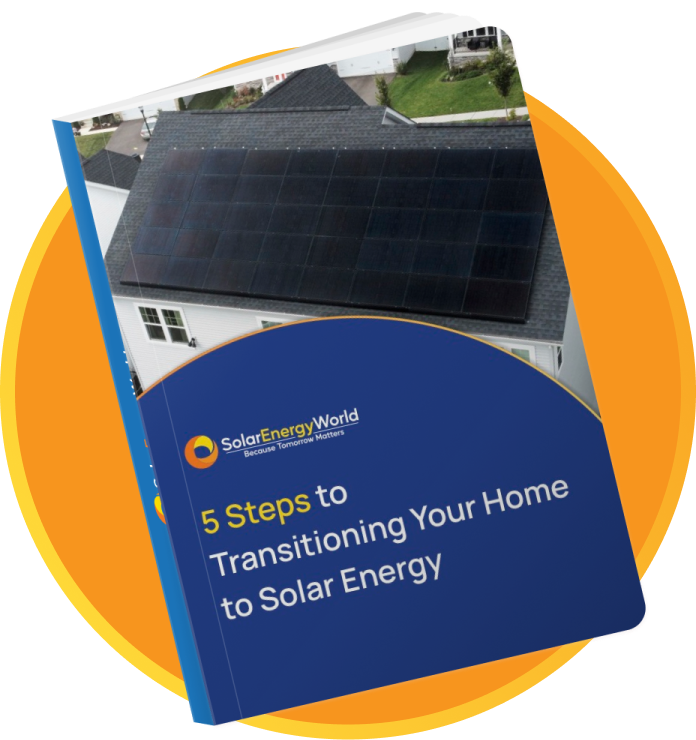Article
The Future of Solar Energy: Innovations Homeowners Should Watch

Since the dawn of the 21st century, renewable energy has become increasingly popular. Thanks to shrinking costs, enticing financial incentives, and the promise of reliable and sustainable alternatives to fossil fuels, more homeowners are powered by green energy than ever before. Today, the future of solar energy is looking bright.
As technology advances and photovoltaic (PV) systems become more efficient, you can expect exciting innovations in the world of alternative energy. Staying up to date with these modern solar solutions – as well as current financial incentives – will help you make the most of your renewable energy systems for the ultimate return on your investment.
Emerging Solar Energy Innovations for Homeowners
The future of solar energy offers plenty of opportunities for homeowners who want to reduce their carbon footprints and embrace sustainability. Here are some of the latest innovations in solar energy for homes:
Solar Roofs
Rooftop solar installations are nothing new, but solar roofing tiles or shingles offer a seamless alternative to traditional panels. Solar tiles act as both a roofing material and an energy production system for your home. They’re an excellent option for homeowners who want to embrace solar energy without compromising aesthetic appeal. In fact, your neighbors may not know that your new roof is also a solar panel array unless you tell them.
The average solar shingle measures 12” by 86” and weighs around 13 pounds. In contrast, classic residential panels are usually around 39” by 65”, weighing closer to 40 pounds before accounting for the necessary mounting equipment. However, this size difference does introduce one drawback. Many solar tiles on the market today aren’t quite as powerful as traditional photovoltaic panels. However, as these options grow in popularity, we can look forward to more efficient solar tile innovations in the future.
Solar Windows
According to the World Economic Forum, there are between five and seven billion square meters of glass surfaces in the US alone. So, imagine the renewable energy we could generate if that surface area could harness the power of the sun. It turns out that we’re taking steps to make this dream a reality.
In 2014, researchers at Michigan State University developed the first transparent solar panels that only absorb ultraviolet and infrared light waves undetectable by the human eye. Since then, a number of companies have developed manufacturing processes to bring this technology to the masses. Although they don’t typically generate enough energy to power the average home, they can help increase sustainability, especially when used alongside other renewable energy sources. We suggest keeping an eye on new developments as the future of this solar energy application unfolds.
Building-Integrated Photovoltaics (BIPV)
Solar shingles and photovoltaic windows aren’t the only ways engineers are incorporating renewable energy generation into modern architecture. Researchers in the field of building-integrated photovoltaics (BIPVs) are developing materials that could turn many parts of your house into solar energy systems. In addition to roofs, windows, and skylights, these scientists hope to turn facades, awnings, balustrades, canopies, and carports into electrical generators.
With proper application, BIVP systems could turn the exterior of your home into a clean-energy production factory without the need for bulky solar panels or disruptions to your view. They also maximize your existing space, so you don’t need to devote valuable real estate to ground-mounted solar arrays.
Solar Storage Innovations: Powering Homes After the Sun Sets
In order to make the most of solar energy in the future, we need to improve the ways we store the clean energy our photovoltaic systems generate. Here are some of the advancements you can anticipate:
Improved Battery Technology
Solar batteries are an essential component of any efficient PV array. They store the green energy generated by solar panels, allowing you to power your home around the clock. Traditional lead-acid and lithium-ion batteries haven’t kept up with the technological advances of solar panels, but recent developments might offer hope for the future of solar energy.
Researchers are improving the functionality of old-school batteries and creating new models to meet changing needs. For instance, flow batteries use an external electrolyte solution to house large amounts of energy outside of the physical battery. Meanwhile, solid-state batteries encourage greater energy density in a lightweight package.
Virtual Power Plants (VPPs)
Homeowners searching for sustainable solar energy innovations will want to consider participating in virtual power plants (VPPs). These systems allow homeowners to send surplus solar energy back to the grid for other utility customers to use in exchange for financial incentives. By pooling the green energy generated by the public, VPP operators can drastically reduce the strain on the electrical grid and minimize our reliance on fossil fuels.
While the principle is similar to net metering, VPPs actually pay participants for the energy they generate and send to the grid instead of merely crediting their utility account.
Solar Energy for Smart Homes
As smart homes become increasingly common and more homeowners implement systems to control household lighting, locks, and appliances remotely, certain technologies will help ensure solar energy keeps up with the times.
Smart Solar Inverters
Traditional inverters transform direct-current (DC) energy into alternating-current (AC) energy, the type used to power our homes and businesses, but that’s where the functionality ends. For many homeowners, smart inverters are a key feature for the future of solar energy. In addition to converting DC power into usable electricity, they also monitor energy production in real-time, respond dynamically to grid fluctuations, and offer bidirectional power flow to record and manage input to and output from your system. We anticipate these devices will continue to become more efficient and seamlessly integrated with home energy management systems in the years to come.
AI and Machine Learning
Artificial intelligence (AI) and machine learning programs are poised to play a major role in the future of solar energy for homeowners and solar farms alike. Outfitting renewable energy systems with these advanced technologies can help them forecast energy demands, predict weather patterns, and adjust energy use accordingly.
Despite concerns about the massive energy requirements required to power AI programs, the ability to optimize efficiency and enhance green energy production may counteract the strain they place on the grid.

How to Switch to Solar in 5 Simple Steps
Government Incentives and Policies for Solar Adoption
State and federal policies offer financial incentives for homeowners who adopt eligible solar energy systems. Here are some of the ways you can save:
Tax Credits and Rebates
Many homeowners who install solar energy systems to offset their reliance on the electrical grid are eligible for incentives like the Residential Clean Energy Credit, which reimburses taxpayers up to 30% of their installation costs. This credit can also be used for solar tiles, geothermal, hydroelectric, and other renewable energy systems. However, those installed after 2032 will see diminishing returns, so it’s important to act quickly.
State and local governments have a wide array of solar energy incentives and rebates for homeowners. Check with your municipal oversight agency, city officials, state government, and utility company to see what financial incentives are available.
Solar Mandates and Policies
As of 2024, 18 states and the District of Columbia have adopted Renewable Portfolio Standards, which require utility companies to source a certain percentage of energy from renewable resources by a set date. Installing a solar panel array on your property – and participating in net metering programs or virtual power plants – can help your state achieve these energy standards and encourage a more sustainable future. Be sure to stay ahead of potential regulatory changes in your area to capitalize on available solar incentives.
The Financial Impact of Solar Innovations
How can homeowners save money with new solar energy innovations? Here are a few additional financial incentives to get you started:
Cost Savings from Advanced Solar Technologies
New technologies can provide more efficient energy production and reduce costs over time by incorporating a range of eco-friendly features. Homeowners can implement cutting-edge products like photovoltaic windows and building materials as they become readily available and financially feasible, creating a sustainable living space with solar energy.
Long-Term Return on Investment
The upfront costs of advanced solar energy tech may seem high, but it’s essential to weigh the long-term savings you’ll enjoy in the future. A standard rooftop solar panel array typically costs around $12,000 to $17,000 but should pay for itself within ten years. Since most panels last 25 to 30 years, the overall return on investment is worth serious consideration. According to estimates, some homeowners could earn upwards of $90,000 in savings over the lifespan of their solar installations – and that doesn’t account for the added benefits of longer-lasting cutting-edge technologies.
Increased Home Value
Numerous studies have shown that property values increase with the addition of solar panels and other alternative energy systems. In fact, some calculations suggest that the average home can sell for 6.8% more than comparable grid-dependent houses. By outfitting your property with modern solar solutions, you may attract a larger pool of eco-conscious buyers.
Environmental and Sustainability Benefits
We can’t overlook the current and future environmental benefits of solar energy. Here are a few ways this green energy model improves sustainability:
Reduction in Carbon Footprint
Whether you’re a homeowner or business owner, your solar energy installation is an investment in the future. These sustainable systems will help offset your use of fossil fuels and minimize your carbon footprint. The 2021 Solar Futures Report, created by the US Department of Energy Solar Energy Technologies Office (SETO) and the National Renewable Energy Laboratory (NREL), found that we could supply as much as 45% of the nation’s energy needs with solar by 2050, leading to dramatic reductions in greenhouse gas emissions.
Sustainable Materials and Manufacturing
Although solar panels facilitate the production of sustainable energy on small and large scales, the manufacturing process hasn’t always been environmentally mindful. Today, solar manufacturers are emphasizing sustainable production processes, green materials, and responsible recycling to minimize carbon emissions and encourage the industry to become as eco-friendly as possible.
Energy Independence
The aging electrical grid in the US has not kept pace with the growing needs of the modern world. Failing infrastructure, cybersecurity threats, extreme weather, and increased energy demands all raise the risk of disruptions in electricity. Homeowners can install solar panel arrays to minimize reliance on the grid and ensure access to power when the grid goes down.
Looking Ahead: Solar Energy’s Role in a Sustainable Future
The future of solar energy is promising for sustainably-minded homeowners and the overall environment. Cutting-edge innovations like solar windows, building materials, and enhanced storage systems offer amplified savings and opportunities to reduce your carbon footprint. Staying informed on local and federal incentives and adopting these advanced technologies can lead to energy savings, increased home value, and a greener planet.Solar Energy World is committed to helping homeowners find renewable energy solutions that work for their households. Get started today with a free solar estimate!
Want a Free Solar Estimate?
Fill out the form to get started today.


